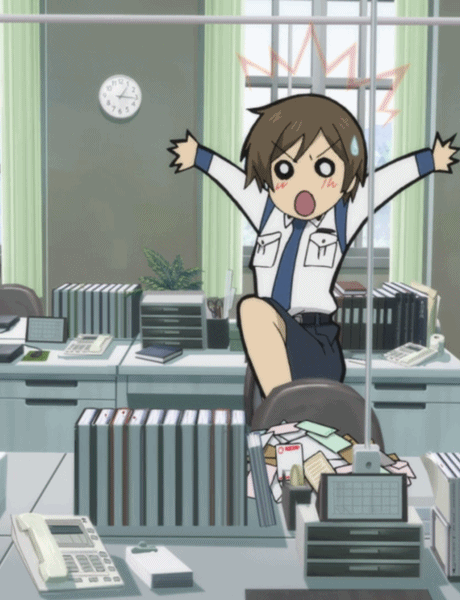 I remember the moment I realized that the Japanese are not all math-oriented, serious geeks (note: I see nothing wrong with being a math-oriented, serious geek).
I remember the moment I realized that the Japanese are not all math-oriented, serious geeks (note: I see nothing wrong with being a math-oriented, serious geek).Prior to that moment, if anyone had said to me, "But people are people. Why can't the Japanese be as silly and raunchy as everyone else?" I would have agreed. I wasn't intellectually surprised to find out I was wrong.
But, cultural assumptions being what they are, I was surprised:
So . . . I'm watching a clip of Japanese television. What's on is some type of game show or reality show where the hosts wake people up in the morning--you know, with the bed head and sleepy voice, etc. etc. This is, apparently, hilarious.This was my initial introduction to what cultural critics often still misunderstand: the Japanese are fans of all kinds of bodily humor, including slapstick.
And the host makes a fart joke.
I'm not kidding!
I am not, which may be why I didn't notice it for so long. But the Three Stooges leave me cold. (I was the kind of kid who felt sorry for the Coyote in The Road Runner--seriously: I hated the Road Runner.)
I don't especially mind (illustrated) slapstick in manga, mostly because it is less violent than farcical--less Three Stooges, more Mr. Bean--and--perhaps mistakenly--because I read it as almost entirely representational.
 Sometimes the slapstick is obviously representational, such as the manga and anime scenes in Library Wars where Kasahara "freaks out" in her head about something someone has said (see above). However, often, the physical humor is exactly what it appears to be: people are giving each other headbutts and noogies and wrestling each other to the ground. Which can be cute but often make me glad I'm not watching the encounters live.
Sometimes the slapstick is obviously representational, such as the manga and anime scenes in Library Wars where Kasahara "freaks out" in her head about something someone has said (see above). However, often, the physical humor is exactly what it appears to be: people are giving each other headbutts and noogies and wrestling each other to the ground. Which can be cute but often make me glad I'm not watching the encounters live. And sometimes, the physical humor is utterly amusing, such as the omake (a possible non-canon ending invented by the mangaka herself) of Wild Rock in which the hero, instead of rescuing the main protagonist from a lion, is eaten!
"So now a moment of silence," writes Kazusa Takashima in her notes, "for that poor, pathetic, but brave man who lost his life for love."